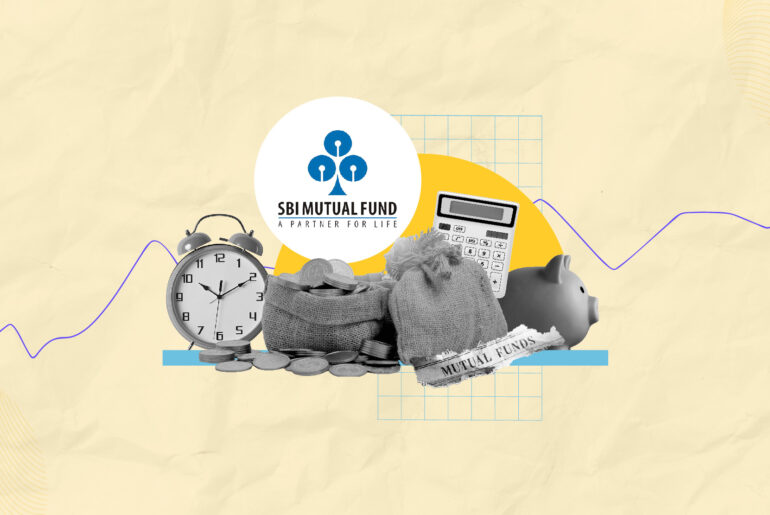Last Updated on Aug 26, 2022 by
Every Indian citizen earning a salary in the country is required to make tax contributions. As the financial year’s end comes closer, there is mostly a single thought running through the mind of salaried individuals, their income tax. It is a direct tax that generates a large revenue for the Government, helps in the smooth running of the nation, and promotes welfare schemes.
But before you file your income tax returns, it is vital to know about the details of taxation and your income tax on salary. Income tax computation gives you a vivid picture of your taxable income from salary, and here is a piece that will walk you through the same.
Table of Contents
Salary income
Every employee engaged in gainful activities receives remuneration from their employer. This compensation is the salary income, which is payable in monthly installments. Your salary includes elements like basic pay, allowances (dearness, travel, and others), house rent, so on.
Salary elements
The elements which make up your salary are:
- Basic salary: It is your salary’s fixed component, as mentioned in employment contracts. The basic pay also includes certain allowances (e.g., HRA) and benefits (e.g., PF).
- Bonus: This is an optional benefit offered to the employees as a reward for their performance in a year.
- Allowances: This is an amount that an employee receives as a part of their regular job duty. The allowance amount is variable across companies and attracts tax depending on its type. The most common allowances offered to the employees are dearness allowance, conveyance allowance, house rent, travel, medical, and so on.
- Gratuity: It is a one-time payment to the employee who is retiring.
- EPF: EPF (Employee Provident Fund) is a scheme where both the employee and the employer contribute monthly investments. This scheme promotes savings and can be withdrawn either at retirement or when an employee ceases service.
Allowance taxability
Among the many allowances offered to an employee, some are fully taxable, a few are partially taxed, and some are entirely tax-free. Given below is a table showing the same.
| Fully-taxable | Partially taxable | Tax-free |
| Dearness allowance (salary’s part which is given to employees, attempting to neutralize inflationary impact) | Entertainment allowance | Leave-travel allowance |
| City compensatory allowance (offered to employees to meet living standards of metropolitan cities) | House-rent allowance for employees living in their own homes is a fully taxable allowance. For certain cases like actual rent, rent is similar to 50% of an employee’s salary, etc.; the allowance exemption is least. | Government employees living abroad |
| Overtime allowance (for working beyond sanctioned hours) | Special allowances – Travel, Research, Hostel, free children’s education | Allowances are offered to UNO employees. |
| Deputation allowance | – | – |
| Servant allowance | – | – |
How to calculate taxable income from salary?
The formula for income tax computation is:
Basic salary
+ HRA
+ Special Allowance
+ Transport Allowance
+ any other allowance
————————————–
Gross income from salary
(-) Deductions
————————————–
Net income
(Tax calculated according to the income tax slab)
You can follow the given steps for income tax computation.
- Collect salary slips for the current financial year.
- Add the components like basic salary, allowances, bonuses, etc.
- The total amount you’re getting is your gross salary. From this amount, you need to deduct the exemptions like transport allowances, house rent allowances, medical allowances, and so on.
- Now the amount you get is your net salary.
Note: Maximum exemption for transport allowance is Rs 19,200 per annum, and for medical allowance is Rs 15,000 per annum.
After you’ve calculated your net salary, you can calculate the income tax on salary using the tax slabs.
Slabs of income tax on salary
Citizens have to pay their income tax following the slab system, and which slab they fall under is determined by their net income.
Old income tax on salary slabs:
| Age Group: Under 60 | |||
| Net salary (per annum) | Rate of income tax | Education cess (from income tax) | Secondary and higher education cess(from income tax) |
| Till Rs 2.5 lakh | NA | NA | NA |
| Rs 2.5 to Rs. 5 lakh | 5% of the income exceeding Rs 2.5 lakh | 2% | 1% |
| Rs 5 lakh to Rs. 10 lakh | Rs 12,500 + 20% of the income exceeding Rs 5 lakh | 2% | 1% |
| Rs 10 lakh and beyond | Rs 1,12,500 + 30% of the income exceeding Rs 10 lakh | 2% | 1% |
| Age Group: 60 to 80 | |||
| Net salary (per annum) | Rate of income tax | Education cess (from income tax) | Secondary and higher education Cess(from income tax) |
| Till Rs 3 lakh | NA | NA | NA |
| Rs 3 to Rs 5 lakh | 5% of the income exceeding Rs 3 lakh | 2% | 1% |
| Rs 5 lakh to Rs 10 lakh | Rs 10,500 + 20% of the income exceeding Rs 5 lakh | 2% | 1% |
| Rs 10 lakh and beyond | Rs 1,10,500 + 30% of the income exceeding Rs 10 lakh | 2% | 1% |
| Age Group: 80 and above | |||
| Net salary (per annum) | Rate of income tax | Education cess (from income tax) | Secondary and higher education cess(from income tax) |
| Till Rs 5 lakh | NA | NA | NA |
| Rs 5 lakh to Rs 10 lakh | 20% of the income exceeding Rs 5 lakh | 2% | 1% |
| Rs 10 lakh and beyond | Rs 1,00,000 + 30% of the income exceeding Rs 10 lakh | 2% | 1% |
New income tax on salary slabs
| Net salary (per annum) | Rate of income tax |
| Till Rs 2.5 lakh | NIL |
| Rs 2.5 to Rs 5 lakh | 5% of the income exceeding Rs 2.5 lakh |
| Rs 5 lakh to Rs 7.50 lakh | Rs 12,500 + 10% of the income exceeding Rs 5 lakh |
| Rs 7.50 lakh to Rs 10 lakh | Rs 37,500 + 15% of the income exceeding Rs 7.5 lakh |
| Rs 10 lakh to Rs 12.50 lakh | Rs 75,000 + 20% of the income exceeding Rs 10 lakh |
| Rs 12.50 lakh to Rs 15 lakh | Rs 1,25,000 + 25% of the income exceeding Rs 12.5 lakh |
| Rs 15 lakh and beyond | Rs 1,87,500 + 30% of the income exceeding Rs 15 lakh |
Conclusion
Knowing which part of your salary is taxable and how to calculate it helps get an idea about your tax burden. As a citizen of the country, it is your duty to file proper taxes, failing, which is sure to attract hefty penalties. You are free to choose either of the two regimes and file your IT returns.
- Hedge Funds in India: Meaning, Types & Investment Strategies - Apr 25, 2025
- Income Funds – Types, Features & Examples - Apr 25, 2025
- List of Top Overnight Mutual Funds in India for 2025 - Apr 21, 2025




